-
California levees face risk of catastrophic failure as a result of historic drought
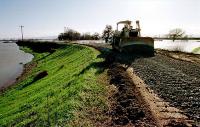
Earthen levees protect dry land from floods and function as water storage and management systems. Over 21,000 kilometers of earthen levees deliver approximately two-thirds of potable water to more than twenty-three million Californians and protect more than $47 billion worth of homes and businesses from flooding. Scientists say that the ongoing extreme drought in the state poses a risk of catastrophic failure to California’s levee systems and highlights an urgent need to invest in research regarding the vulnerabilities of these systems under extreme climatic events.
-
-
Climate change and Hurricane Katrina: what have we learned?
Theory and computer models show that the incidence of the strongest hurricanes — those that come closest to achieving their potential intensity — will increase as the climate warms, and there is some indication that this is happening. Global warming, however, is occurring far too fast for effective human adaptation. Adapting to the myriad changes expected over the next 100 years is such a daunting prospect that otherwise intelligent people rebel against the idea even to the extent of denying the very existence of the risk. This recalcitrance, coupled with rising sea levels, subsiding land, and increased incidence of strong hurricanes, all but guarantees that New Orleans will have moved or have been abandoned by the next century.
-
-
Interactive tool roots discussions about the cost of nuclear energy in hard evidence
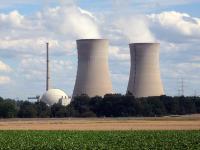
Despite the ever-changing landscape of energy economics, subject to the influence of new technologies and geopolitics, a new tool promises to root discussions about the cost of nuclear energy in hard evidence rather than speculation. Over the last two years, the Bulletin of the Atomic Scientists has developed the Nuclear Fuel Cycle Cost Calculator, an online interface that provides a nuanced look at the economic costs of nuclear power. The calculator provides a simple gateway into the physics-laden universe of nuclear economics. A user can slide more than sixty moving scales to tweak inputs like uranium price or reactor construction time, and then watch the expected price shift.
-
-
Civil engineering graduate students awarded scholarships for water research

Three Texas A&M graduate engineering students were recently awarded scholarships to pursue water-related research. The first project will investigate and better define “green water,” which is generally perceived as the soil water available for plants to use, and its potential to alleviate the projected water shortage for Texas agriculture. The second project focuses on future water availability and allocations in the Rio Grande River. The third focuses on the joint effects of climate change, urbanization and flow regulation on water supply in a metropolitan area.
-
-
Drought causing California’s San Joaquin Valley land to sink, damaging infrastructure
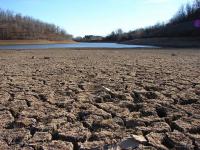
Californians continue pumping groundwater in response to the historic drought, and as a result, land in the San Joaquin Valley is sinking faster than ever before, nearly two inches per month in some locations. Sinking land, known as subsidence, has been occurring for decades in California because of excessive groundwater pumping during drought conditions, but the sinking is happening faster. The increased subsidence rates can damage local, state, and federal infrastructure, including aqueducts, bridges, roads, and flood control structures. Long-term subsidence has already destroyed thousands of public and private groundwater well casings in the San Joaquin Valley. Over time, subsidence can permanently reduce the underground aquifer’s water storage capacity.
-
-
New facility will be center of research to make U.S. grid more robust, smarter
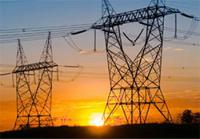
The U.S. electric power grid is the most complex machine ever built. Transforming it from an early twentieth century machine to a twenty-first century engine for innovation is a demanding scientific and technical challenge. The Pacific Northwest National Laboratory has launched its new Systems Engineering Building (SEB), in which industry, academia, and leading scientists will conduct research which will change the future of the U.S. power grid. “The private sector and the government must work together to ensure that we can prevent and recover from grid disruptions, whether they come from cyberattack, physical attack, or severe weather that is brought on by climate change,” Deputy Energy Secretary Elizabeth Sherwood-Randall said at the building’s dedication.
-
-
DOE grant to make Sacramento, Calif. grid more resilient in emergencies
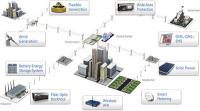
The Department of Energy (DOE) has awarded the Sacramento Municipal Utility District (SMUD) $600,000 to install smart-grid technologies which will make the SMUD grid more adaptable to adversity. The Grid Resilience Grant helps fund half of SMUD’s $1.2 million Resilient Grid Initiative which is designed to make SMUD’s distribution system more adaptable to major disasters and reduce the effects of climate change through the installation and operation of high-voltage (69 kilovolt) switches and the implementation and operation of voltage optimization measures. These measures will increase the carrying capacity of the system during major natural disasters and other emergencies.
-
-
U.S. coastal flood risk on the rise ten years after Hurricane Katrina
A decade after Hurricane Katrina caused $41 billion in property and casualty insurance losses, the most expensive catastrophe ever experienced by the global insurance industry, rising sea levels are driving up expected economic and insurance losses from hurricane-driven storm surge in coastal cities across the United States. Rising sea levels contributing to increased risk of severe economic damage from flood following a hurricane – and Miami, New York, and Tampa now face greater risk than New Orleans.
-
-
World’s most at-risk coastal regions should adopt Louisiana’s post-Katrina protection plans
A decade after Hurricane Katrina hammered America’s Gulf Coast, measures are being taken there to protect against similar devastation from natural disasters — as well as against long-term, gradual impacts resulting from climate change. Other coastal regions across the world, however, remain vulnerable to damaging storms, and providing similar protection for the tens of millions of people living in those areas — around 38 percent of the global population, or 2.5 billion people, lives within 100 kilometers (62 miles) of the coast — will require international action. Experts say that the world’s most at-risk nations should implement coastal protection plans like those adopted by Louisiana.
-
-
Toxic chemical found in fish-eating in birds outside of a Georgia’s Superfund site
Researchers have found that a contaminated mixture called Aroclor 1268 has spread beyond a former chemical plant, now a Superfund site, near Brunswick, Georgia. Aroclor 1268 is composed of a suite of toxic chemical compounds known as polychlorinated biphenyls, or PCBs. The chemical was used to produce insulation materials at the Linden Chemical Plant at the Turtle Estuary near Brunswick until 1994.
-
-
Two major U.S. aquifers contaminated with high levels of natural uranium
Nearly two million people throughout the Great Plains and California live above aquifer sites contaminated with natural uranium which is mobilized by human-contributed nitrate. Data from roughly 275,000 groundwater samples in the High Plains and Central Valley aquifers show that many Americans live less than two-thirds of a mile from wells that often far exceed the uranium guideline set by the Environmental Protection Agency. A new study reports that 78 percent of the uranium-contaminated sites were linked to the presence of nitrate, a common groundwater contaminant that originates mainly from chemical fertilizers and animal waste.
-
-
New tools increase Palestinians’ capacity to face earthquakes
A massive earthquake would lead to the devastation of 70 percent of houses in the Palestinian territories, and the death of 16 000 people. As the Palestinian territories are located in the Rift Valley — right at the frontier between the Arabian and African plates which are moving farther apart — the likelihood of earthquakes is expected to keep increasing. Two projects aim to make the next generation of citizens and researchers better equipped to face this growing threat.
-
-
New technology solves city pipelines leakage problem without excavation
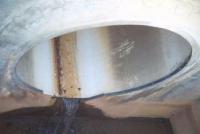
In Mexico City there are twenty-six thousand kilometers of water pipes and drainage, of which about 8,000 are useless, with risk of collapse and resulting cuts in service. The water pipes infrastructure of many other cities is not much better. A Mexican start-up has created a technology to renew piping without the need for excavation, ensuring it lasts fifty years, twice as long as traditional piping.
-
-
Studying the impact of removing brine from under- sea carbon dioxide stores

The Birmingham, U.K.-based Energy Technologies Institute (ETI) is seeking partners for a project to study the impact of removing brine from under-sea stores that could be used to store captured carbon. A previous ETI project in its Carbon Capture and Storage (CCS) technology program led to the development of the U.K. principal storage screening database, CO2Stored, which made a number of assumptions to estimate capacity and injectivity for each of the 550 stores off the U.K. coast. One of these was that brine can potentially be removed through a purpose built well or wells from the store to depressurize it, and can still retain the operation and integrity of the store.
-
-
Inspired by bats, sensor technology detects dangerous structural cracks

Researchers have developed an ultrasound sensor for detecting dangerous cracks in structures such as aircraft engines, oil, and gas pipelines, and nuclear plants. The device, known as a transducer, identifies structural defects with varying ultrasonic frequencies and overcomes the limits of other, similar devices, which are based on rigid structures and have narrow ranges. It is thought to be the first device of its kind in the world.
-
More headlines
The long view
Water Wars: A Historic Agreement Between Mexico and US Is Ramping Up Border Tension
As climate change drives rising temperatures and changes in rainfall, Mexico and the US are in the middle of a conflict over water, putting an additional strain on their relationship. Partly due to constant droughts, Mexico has struggled to maintain its water deliveries for much of the last 25 years, deliveries to which it is obligated by a 1944 water-sharing agreement between the two countries.
Trump Is Fast-Tracking New Coal Mines — Even When They Don’t Make Economic Sense
In Appalachian Tennessee, mines shut down and couldn’t pay their debts. Now a new one is opening under the guise of an “energy emergency.”
Smaller Nuclear Reactors Spark Renewed Interest in a Once-Shunned Energy Source
In the past two years, half the states have taken action to promote nuclear power, from creating nuclear task forces to integrating nuclear into long-term energy plans.
Keeping the Lights on with Nuclear Waste: Radiochemistry Transforms Nuclear Waste into Strategic Materials
How UNLV radiochemistry is pioneering the future of energy in the Southwest by salvaging strategic materials from nuclear dumps –and making it safe.
Model Predicts Long-Term Effects of Nuclear Waste on Underground Disposal Systems
The simulations matched results from an underground lab experiment in Switzerland, suggesting modeling could be used to validate the safety of nuclear disposal sites.
